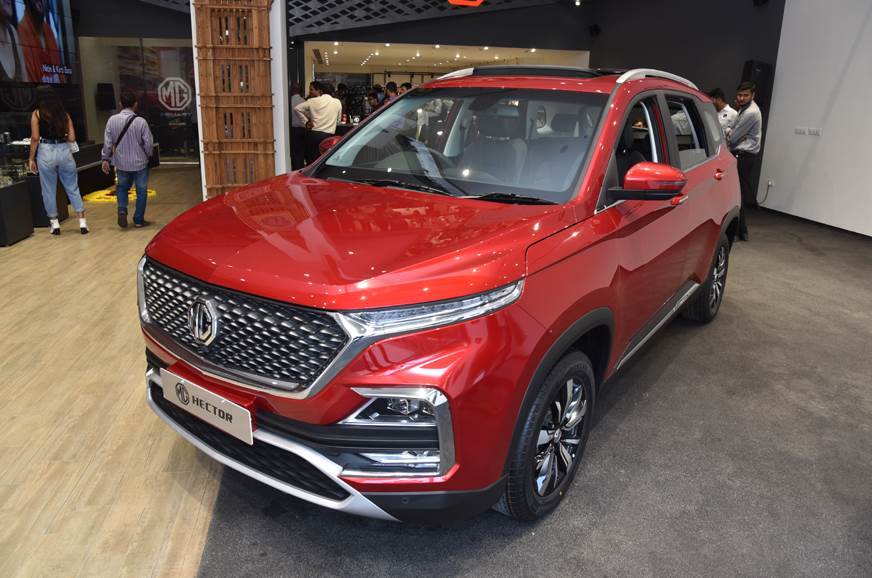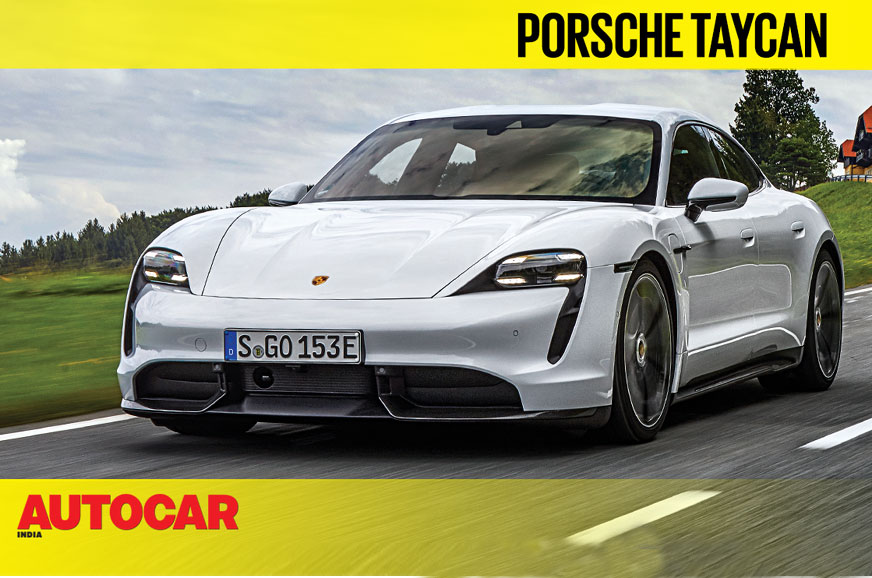
Porsche Taycan India bound next year
from Autocar India https://ift.tt/2Y3CPZ8
via IFTTT

Lamborghini has unveiled a dramatically styled V12 Vision Gran Turismo concept car for the PlayStation racing game Gran Turismo Sport, which previews potential future design trends being explored by the marque.
The machine was unveiled at the finals of the Gran Turismo Championship in Monte Carlo. While a real-life version of the supercar won't be built, the single-seater-influenced concept will be available to drive on the Gran Turismo Sport video game in Spring 2020.
Despite being a virtual model, the V12 Vision Gran Turismo was designed by Lamborghini Centro Stile in Sant'Agata Bolognese, Italy, just like any real-life Lambo. The outlandish single-seat design melds the futuristic with a consideration of aerodynamics, indicated by the outboard wheels and separated bodywork. Underneath, it shares its 820hp hybrid V12 powertrain with the Sian.
The cabin concept (theoretically) allows the driver to enter the car from the front; like the canopy of a jet fighter. All controls come via the unique steering wheel, with all information projected onto the windscreen.
Unfortunately, unlike traditional concepts, the Vision Gran Turismo project isn't intended to preview any production model, and has been treated as an opportunity for designers to explore future themes. Lamborghini says the single-seater draws on "historic Lamborghini design DNA, expanding the potential of the design language in a futuristic way." The carmaker says that much of the styling was influenced by and for the sake of aerodynamic efficiency.
What are you driving?
I’m driving a G63 - because I was tired of being careful on Mumbai roads in my 911. The G63 takes in its stride any kind of roads one throws at it. I also drive a BMW 7 Series when I am in the mood for luxury and occasionally, a Mahindra E2O.
What’s next on your wish list?
A 911 Turbo Cabriolet or the Turbo S.
The most fun you’ve had in a car?
Driving my Mercedes-Benz SLK from Ajmer to Jaipur on the seven-lane highway. It was quite a sensational experience, especially in winter with the Merc’s top down and sun shining.
Dream money no object car?
A 1938 SS Jaguar 100 because of its sheer beauty and timeless lines.
Who is your all time greatest motorsport hero?
Nigel Mansell, also known as, ‘Il Leone’ (The Lion) for his fearless driving style.
Favourite road?
Mumbai to Manor in Maharashtra, due to high-speed curves and nice views.
What’s on your automotive bucket list?
Driving from Casablanca to Timbuktu.
What would you do with your last litre of fuel?
It wouldn’t matter. Will just park my cars and continue to enjoy their design.
Your ideal five-car garage would be?
1. SS Jaguar 100
2. Mercedes-AMG G 63
3. Porsche 911 Turbo Cabriolet
4. Tesla Model S
5. The World War II Ford GPW with Willys design
What was your first car?
Maruti Gypsy back in 1992 .
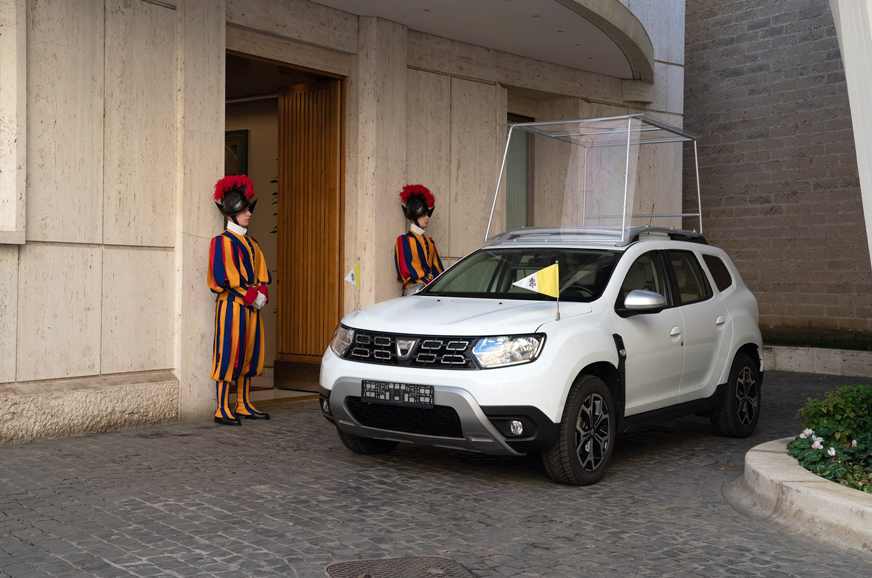
Renault has gifted a specially modified Dacia Duster to the head of the Catholic Church, Pope Francis.
The budget SUV has been adapted to suit papal needs by Dacia’s Prototype department and Special Needs Team, in partnership with Romanian coachbuilder Romturingia.
The new Popemobile offers the same five-seat layout as the standard Duster but has a "particularly comfortable" rear bench added to suit lengthy public parades.
Also featured are a large sunroof, roof-mounted grab handles and, as is customary with Popemobiles from all marques, a removable transparent display box to allow crowds a better look at His Holiness.
The specially modified Duster is finished in white with a leather interior, and its suspension has been lowered by 30mm to allow for easier ingress and egress.
It was delivered to The Vatican by Christophe Dridi, managing director of Groupe Renault Romania, and Xavier Martinet, general manager of Groupe Renault Italy.
The Duster won't be the Pope's first experience of a Dacia; during a 2016 visit to Armenia, he used an unmodified example of the Logan sedan as his official transport. He promotes frugality and modesty, whereas his predecessors rode in a variety of premium vehicles, including those from Mercedes-Benz and Range Rover.
In 2017, Lamborghini gifted Pope Francis a Huracán specially painted in the official colours of The Vatican. After he had blessed and autographed the car, it was sold at a charity auction for £630,000.
Also see:
Renault Kwid, Duster, Lodgy now get 7-year extended warranty
2019 Renault Duster facelift buyer's guide video
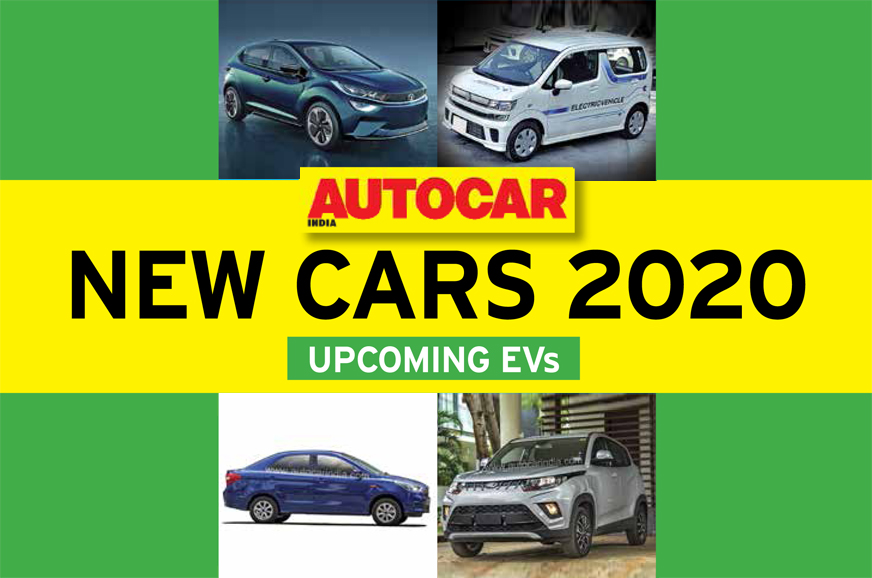
While the India-spec e-tron’s specifications have not been revealed yet, the model is expected to be similar to its European counterpart. The 5-seat e-SUV sits between the Q5 and Q7, and gets a 95kWh battery pack which powers two electric motors – a 125kW unit at the front and 140kW unit at the rear – with a total of 360hp and 561Nm of torque sent to all four wheels. In Boost mode, this is cranked up to 408hp and 661Nm, and in that mode, the e-tron cracks 0-100kph in 5.7sec, and is limited to a top speed of 200kph. A real-world range of around 300km can be expected. The e-tron can be charged to 80 percent in just 30min via a DC fast-charger, but it’ll take 8.5hr via a 400V three-phase outlet. Every e-tron buyer in India will get a standard home-charging setup, but fast-chargers will be installed at select dealerships.
Coming Early 2020
Price From Rs 1.4 crore
The I-Pace will be one of the first fully electric models from Jaguar to come to India. It uses uses two electric motors, placed on each axle to enable all-wheel drive. The synchronous permanent magnet motors deliver the equivalent of 400hp and 695Nm of torque and helps the SUV achieve 0-100kph in 4.8 sec. According to Jaguar, charging up to 80 percent on a 50kW charger will take 1hr 25min and a 30min charge will deliver 125km of range. Key rivals to the I-Pace are the Mercedes-Benz EQC and the Audi e-tron.
Coming End 2020
Price From Rs 1.5 crore
Mahindra has pushed the launch of the eKUV100 to early 2020 and now the model will come with
an updated electric motor that makes 40kW (54.4hp). The battery can be charged in just 5hr 45min using a regular charger or 55min on a fast charger. The only downside, however, appears to be that the battery is rated at 15.9kWh and that the claimed maximum driving range is just around 120km. With the eKUV100, Mahindra could start a niche of affordable high-riding EV hatchbacks in India, a segment that currently has no rival.
Coming Early 2020
Price From Rs 10 lakh
The all-electric XUV300 will sit above the eKUV100 and is expected to hit showrooms around April 2020. It will be powered by a near-130hp electric motor that will draw juice from a 40kWh battery pack. It will have a range of 300km and come with DC fast-charging capabilities. Apart from the aforemented EV tech, the XUV300 EV will share its underpinnings, interior and body panels with the standard vehicle. However, there are talks of it getting a slightly altered exterior styling. It will be priced below the Hyundai Kona in our market.
Coming April 2020
Price From Rs 15 lakh
Mahindra’s second electric sedan will be based on the Ford Aspire. Essentially, the first product to be co-developed by the recently announced Mahindra-Ford tie-up, this new sedan will get to showrooms sometime by the end of 2020. The Aspire-based EV will not be based on the sub-four-metre version that’s sold here, but instead a full-sized sedan, the same 4.2m-long Aspire that Ford exports to markets like South Africa. Ford will provide just the ‘glider’ or body shell without the engine and transmission to Mahindra Electric, that, in turn, will add in its in-house-developed electric powertrain. A high-voltage 380V system is being developed to match a larger battery back. Mahindra is readying a 60kW (81.5hp) motor along with a bigger 25kWh battery pack. The company is targeting a real-world range of around 150km. Mahindra will initially target this new sedan for corporate customers as a fleet vehicle and then eventually for private buyers.
Coming Late 2020
Price From Rs 15 lakh
Maruti Suzuki will bring its first EV based on the Wagon R sometime in late 2020. The company has already been testing no less than 50 EV prototypes all across India that are based on the Japanese-market Wagon R but for here. The model will look significantly different and will be based on the India-spec Wagon R. Not much is known about the Wagon R EV for India but we can surely confirm that the model will have around 130km of range and will support fast charging.
Coming End 2020
Price From Rs 10 lakh
The MG ZS EV is expected to hit the showrooms by the end of this year. It will come with a 44.5kWh battery pack and will be good for 262km range from a single charge. With a 7kW AC power supply, MG says the battery will take 7hr to charge and though a 50kW DC fast charger would be able to charge the battery to 80 percent in around 40min. A synchronous electric motor that develops 143hp and 353Nm of torque will drive the front wheels. MG is in the process of collaborating with multiple domestic partners to set-up home-charging points for owners.
Coming End 2020
Price From Rs 25 lakh
The first full-electric Porsche for the world will come to India by October 2020. The company will offer chargers at various hotels and will also install them at the owner’s residence and office, according to requirements. The Taycan also stands out for being the first car to use an 800V electrical system, enabling charging at 350kW, which can give 100km of range in 5min minutes, or take the battery from 5 percent to 80 percent in around 20min. It’s two electric motors producing a combined 625hp and 850Nm in the Turbo, deliver a 0-100kph time of 3.2sec. In the Turbo S, variant, they hit a peak of 760hp and 1,050Nm with an overboost function that shortens that sprint to 2.8sec. Performance is enhanced by a 2-speed gearbox on the rear axle, which has a short ratio for maximum acceleration from a standstill. Depending on the selected mode, the Taycan can also switch between four-, rear- and front-wheel drive. The Taycan Turbo will have an official range of 452km based on the latest test regime and the Turbo S at 420km. Interior highlights include the 911-derived driving position and the eye-catching use of a configurable 16.8-inch digital instrument panel, a 10.9-inch infotainment screen and an 8.4-inch screen for the climate control below that. Buyers have the option of adding a fourth 10.9-inch touchscreen for the front passenger too.
Coming mid-2020
Price From Rs 2.5 crore
The Tata Altroz EV is expected to come some time in the second half of 2020. The car was shown for the first time at the Geneva motor show earlier this year. While the company has not revealed any specifications yet, we know that the model will have a targeted range of around 250-300km and a charging time of around 60min. The EV-version of the Altroz will feature same body and interiors as the standard hatchback but will have minor changes like a different alloy wheel design.
Coming End 2020
Price From Rs 10 lakh
The Nexon EV will be based on the refreshed Nexon and is expected to hit the market by March 2020. It will feature Tata’s Ziptron EV tech and will have a range of around 300km. The model will come with an all-digital instrument cluster and other creature comforts just like the standard SUV. It’s expected to be priced in the Rs 15-17 lakh range. It’s battery pack will be encased in a high-strength steel casing and boasts an IP67 rating. Tata Motors will offer a standard 8-year warranty on the battery pack and motor.
Coming March 2020
Price From Rs 15 lakh
The XC40 Recharge is expected to make it to India next year. It features a 408hp twin-motor setup with a claimed range of more than 400km. The four-wheel-drive electric SUV features two 204hp electric motors, one mounted on each axle, that combine to offer 408hp and 660Nm of torque. It largely retains the exterior and interior styling of the conventional XC40, albeit with the addition of a new sealed fascia. Most of the interior bits are shared too. Volvo may bring the SUV to India via the CKD route.
Coming End 2020
Price From Rs 70 lakh
Disclaimer: All prices, estimated, ex-showroom
Also see:
New cars for 2020: Hatchbacks to wait for
New cars for 2020: Sedans to wait for
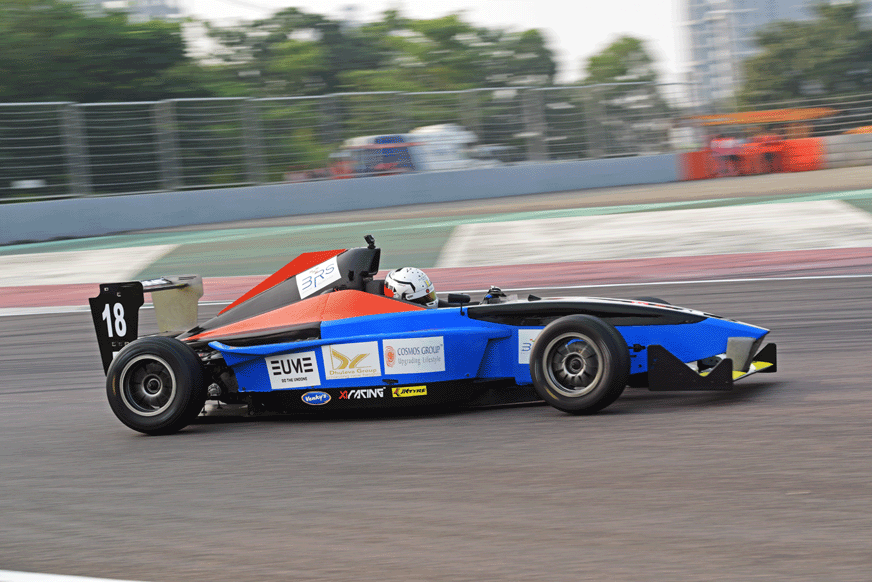
The X1 Racing league kicked off its inaugural season with its first round currently underway at the Buddh International Circuit (BIC) in Noida. Team Bangalore Racing Stars ended up dominating the opening day of racing with the pair of Arjun Maini and Oliver James Webb winning both the races. Their teammates, Nayan Chatterjee and Michelle Gatting topped off a successful day for the team by finishing on the podium for Race 2. Earlier in the day the pair had finished Race 1 in 4th place.
Mumbai Falcons were another team that impressed, finishing both the races on the podium. Karthik Tharani and Mikkel Jensen finished Race 1 in 3rd place, while the pair of Kush Maini and Pippa Mann completes Race 2 in 2nd place.
As a brief recap, the X1 Racing League’s races see two drivers share a car for a race. Rather than stopping to change tyres, the pit stops instead see drivers swapping positions with their teammates. Each team currently comprises of five drivers and fields two cars. You can read more about the individual team composition here.
The X1 Racing League races were held alongside the final round of the 2019 JK Tyre National Racing Championship. In the Gixxer Cup, a DNF by previous points leader, Pune’s Tanay Gaikwad, saw the championship come down to the wire with just two points separating the leader. The opening Gixxer Cup race for the weekend was won by Syed Muzammil Ali, catapulting him to the top of the points chart with 56 points. Rounding out the remainder of the podium were Sanjeev Mhatre and AmulAngadi in second and third place, respectively.
In the LGB Formula 4 category, Day 1 witnessed two races with the results leaving the race for the championship down to the wire. While Vishnu Prasad had taken the lead on the points charts at the end of Round 3 a few months ago, a strong showing by Raghul Rangaswamy in both races saw him equal Vishnu - at 73 points - on the championship table. Raghul placed second in race one, with Diljith TS taking the checkered flag, and third in race two, with Ashwin Data claiming first place.
Moving to other results, in the 1000cc Superbike Cup, Bhumik Lalwani and Dilip Lalwani from Mt Abu claimed first and second place, respectively while third place was bagged by Simranjeet Singh.
Day 2 will see the cup decider for the Gixxer Cup and LGB Formula 4 with both classes set to feature a race apiece. There's going to be a lot more action from X1 Racing too, with two more races scheduled. Stay tuned.
Day 1 Results
JK LGB Formula 4:
Race 1:
1. Diljith TS (13:31.101)
2.RaghulRangaswamy (13:31.298)
3. Ashwin Datta (13:31.349)
Race 2:
1. Ashwin Datta (19:37.578)
2. Diljith (19:38.649)
3. RaghulRangasamy (19:38.775)
JK Tyre Suzuki Gixxer Cup:
1. Syed Muzammil Ali (23:30.905);
2. Sanjeev Mhatre (23:37.455);
3. Amul Angadi (23:40.296)
JK Tyre Superbike Cup 1000CC:
1. BhumikLalwani (15:40.361)
2. DilipLalwani (15:49.420)
3. Simranjeet Singh (15:55.262)
X1 Racing:
Race 1
1. Bangalore Racing Stars (32:34.633)
2. DG Racing Ahmedabad (32:45.545)
3. Mumbai Falconss (32:55.046)
Race 2
1. Bangalore Racing Stars (32:51.044)
2. Mumbai Falconss (32:58.124)
3. Bangalore Racing Stars (32:59.273)
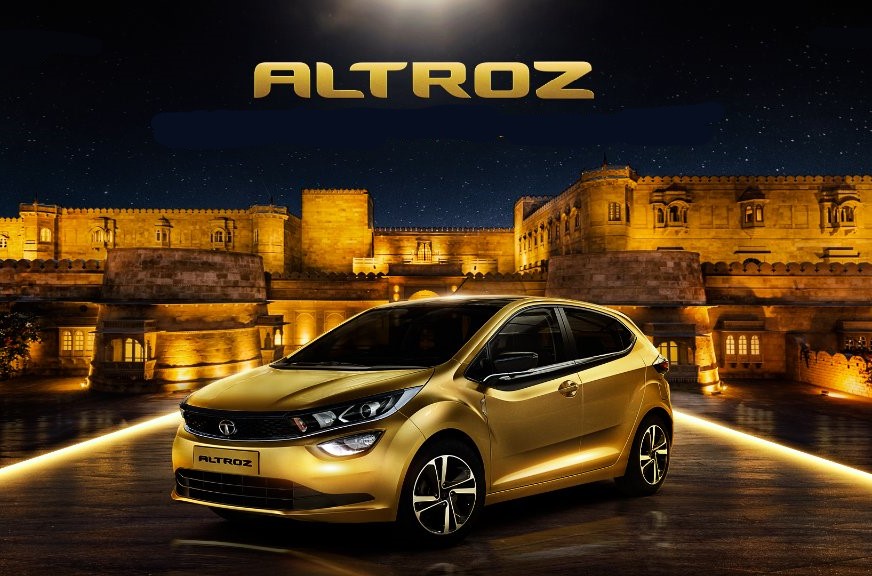
One of the most anticipated new car launches next year is the Tata Altroz. While the promotional campaign, which included a number of teasers, had begun a while ago, Tata will officially reveal the India-spec premium hatchback in full on December 3 (8:30pm), at Jaisalmer.
While we do know a significant amount about the upcoming Maruti Baleno, Honda Jazz and Hyundai i20 rival - three BS6 engine options (two petrol, one diesel), its platform (ALFA) and the fact that the premium interiors will come with a 7.0-inch infotainment system, there’s quite a bit of information that we are expecting to get at the reveal event at Jaisalmer.
For one, we don’t know how many variants Tata will offer, which engines will come in which variant option, and what features will be on offer with each variant.
Altroz prices will only be revealed in January 2020, though bookings for the premium hatchback will officially begin on December 4 - a day after the car is unveiled - with the booking amount set at Rs 21,000.
We will be covering the event live and will be driving the car....Stay tuned to our website and social media for more on the Altroz.
Also see:
Tata Gravitas: 5 things to know
First Tata Altroz rolls off the production line
Tata Nexon facelift to debut with Nexon EV
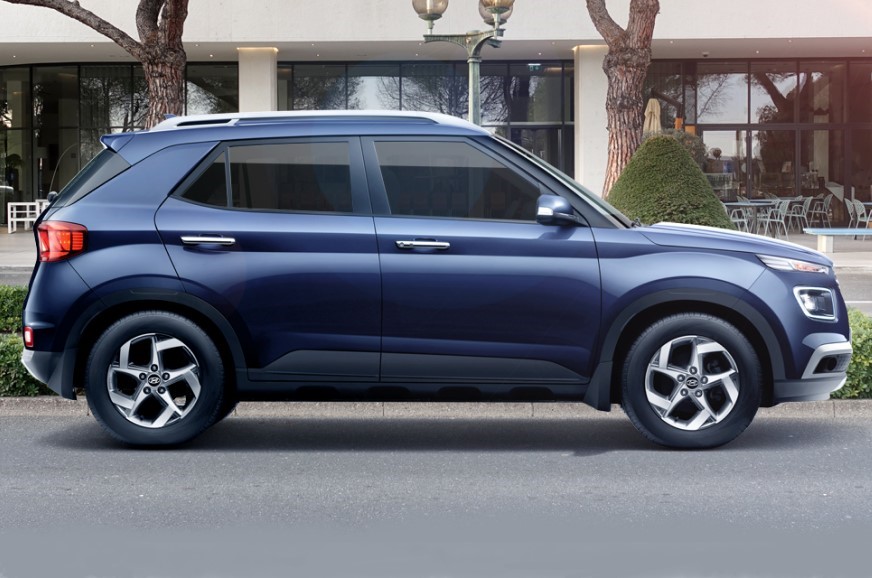
A gaggle of new models in the past six-eight months have given a new charge to the utility vehicle (UV) segment in India. While UVs is the sole segment to be in the black in the April-October 2019 period (0.14 percent), a smart uptick in October 2019 (22 percent) with overall sales of 1,00,725 units promises to be the harbinger of good times for SUV and MPV manufacturers.
A key contributor to this growth is the new Venue, Hyundai Motor India’s first compact SUV that had launched in May 2019. The Venue comes with three engine options – a 90hp, 1.4-litre diesel; an 83hp, 1.2-litre naturally aspirated petrol; and a 120hp, 1.0-litre turbo-petrol unit.
Until end-October 2019, the Hyundai Venue has sold a total of 51,257 units – 29,726 petrol and 21,531 diesel (58:42 petrol:diesel) and contributed 9.36 percent to total UV sales (5,47,572) in the first seven months of FY2020.
| Hyundai Venue sales | |
| Month | Units sold |
| May | 7,049 |
| June | 8,763 |
| July | 9,585 |
| August | 9,342 |
| September | 7,942 |
| October | 8,576 |
| Total | 51,257 |
In the six months since its launch, the Venue has averaged sales of 8,542 units a month; very good going for a new vehicle and enough to ensure that the compact SUV is a regular in the monthly Top 5 UV sales chart. The Venue drove into the Top 5 bestselling UVs chart in the very month of its launch - fourth place with 7,049 units in May - and in June (with 8,763 units sold) it came tantalisingly close to going past the No. 1 UV, the Maruti Vitara Brezza. In July 2019, with 9,585 units, it was the bestselling SUV in India, unseating the longstanding UV champion, the Maruti Suzuki Vitara Brezza. In August, with 9,342 units, it continued to top the sales chart though the Venue lost its numero uno position to the Vitara Brezza in September, when the Hyundai sold 7,942 units. In October, it dropped one more rank to third place (8,576 units), as a result of the hard-charging Kia Seltos becoming India’s No. 1 UV within three months of launch and improved performance, in terms of sales, from the Vitara Brezza.
Venue help increase Hyundai's UV market share to 19 percent
This smart market performance, not surprisingly, has given Hyundai Motor India new heft in the UV market. Of Hyundai's total 1,06,366 UVs sold between April-October 2019, the Venue accounts for 48 percent. In terms of UV market share, the Venue has given the Korean carmaker a new charge. In October, combined sales of the Venue and Hyundai’s hot-selling Creta midsize SUV were 15,845 units, up 35 percent year-on-year (October 2018: 11,702; only Creta sales).
The strong performance of Hyundai's SUVs - which account for 36 percent of the Korean carmaker's total passenger vehicle sales of 2,94,444 units in April-October 2019 - have helped the company expand its UV market share by over 5 percentage points, to 19.43 percent from 13.91 percent a year ago. This makes it the biggest share gainer of all UV makers during this period.
The company says it has around 80,000 bookings for the Venue, which means this is one model that will continue to be in the news.
Also see:
Hyundai Aura world premiere on December 19, 2019
Hyundai Xcent sales cross 2.5 lakh milestone
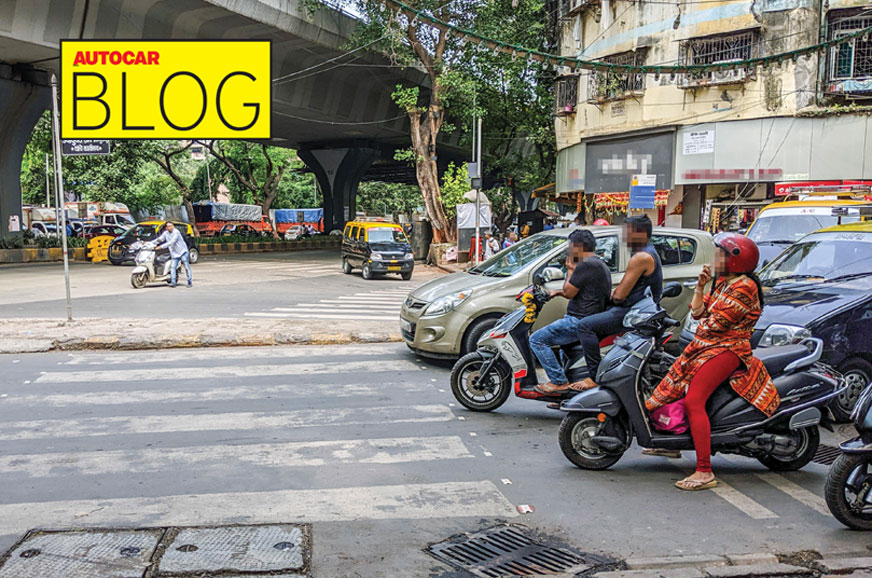
The long overdue, steeper traffic fines were finally implemented with the passing of the Motor Vehicles (Amendment) Bill 2019. And while it brought in a host of developments, none attracted as much news print as the hiked fines. Quite expectedly so too; penalties for the various traffic violations didn’t just increase by a few hundred rupees or a nominal percentage – they went up as high as twenty times in some cases.
The jungle-like law and order situation on our streets would finally be a thing of the past, and the disciplined road user, once an endangered species, will now suddenly see a healthy increase in numbers. Reports soon came in of hefty fines levied and voila, road users began obeying the law, even to the extent of stopping before a zebra crossing.
While it wasn’t as magical as you’d like to believe, the effect was quite apparent. I notice it in Mumbai. For example, the junction right before our office (see photo, helmet still missing though) has everyone stopping before the zebra crossing line, and that too without a police on duty.
At last we seemed to be on our way towards more disciplined and chaos-free roads, but then news reports started coming in of poor folks having to shell out exorbitant amounts in fines, with some two-wheeler riders coughing up more than the value of the bikes themselves. And, of course, in no time many local governments decided to roll back the hiked fines. States like Gujarat, Karnataka, West Bengal and Maharashtra have already gone back to the old fines or have proposed to do so. Naturally, there’s a lot of discussion both for and against the move.
There is, however, a simple solution to all this, and it’s not even untested. Many Scandinavian countries follow a ‘day-fine’ – where above a minimum amount, the offender is penalised based on their personal daily income. And before you think this isn’t possible here, remember we have the Aadhaar. The day-fine system is regarded as fair as it hurts everyone equally. Think about it, dangerous driving now attracts an amount of Rs 5,000. This would hurt someone in the lower income bracket, riding his 10-year-old scooter, but to someone behind the wheel of their latest luxury car, this would seem like a small ‘fee’ to pay for the privilege of racing on the streets. If fines are to be effective, they have to
pinch everyone.
Then there is the fact that many accidents are a direct result of our pathetic road conditions and infrastructure. So shouldn’t there be fines for shoddy roadwork, missing sign board, unmarked speed breakers, etc.? Of course, there should! These would have a direct result in lowering accidents.
We need to quickly implement these measures and more as needed, because if things stay the same, we’ll be back to where we started, with more states rolling back fines to appease the masses. Heck, parties will make this an election promise. Wait, that’s happened already. Yes, we really need these tweaks and soon. After all, they’re really only some fine-tuning.
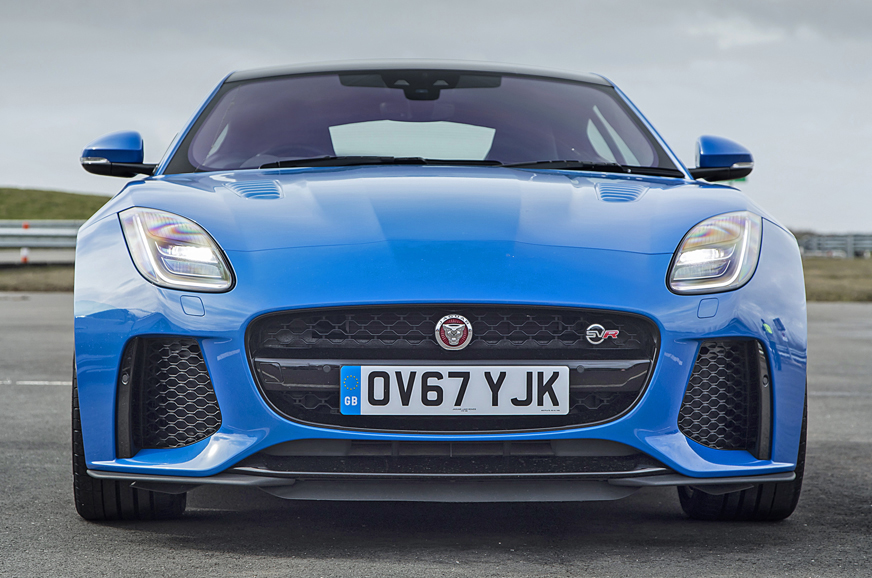
Jaguar will reveal the F-Type facelift on Monday 2 December – and a teaser video has hinted that the launch event could include a major stunt.
The new sportscar will gain refreshed styling and upgraded technology and has already been seen testing in camouflage livery in recent weeks.
Jaguar confirmed the December 2 launch date with a short video on social media, which also said the event would be held 'in partnership with Hot Wheels'. The teaser video features a Hot Wheels track loop, suggesting the new F-Type could undertake a similar stunt in reality.
Jaguar Land Rover (JLR) has previously attempted a number of stunts and world records at launch events. The Jaguar F-Pace SUV set a world record for the widest loop in a car and the Jaguar E-Pace set a world record for the longest barrel roll by a production car. The Land Rover Discovery was launched by driving onto the world's largest Lego structure: a recreation of London's Tower Bridge.
The most recent spy shots of the F-Type, taken near JLR's technical HQ in Gaydon, Warwickshire, England show the restyled front end more clearly, with a new clamshell bonnet, a more prominent grille, and slim, angular LED headlights mounted lower down the nose.
The rear retains the same vertical boot lid but gets new wraparound tail-lights and a reshaped bumper. A quick glimpse at the interior doesn't reveal much, but it looks like the infotainment has moved on a generation, while the rotary climate control display remains.
Much of the more advanced technology and infotainment features from the electric I-Pace and updated XE are expected to make their way into the F-Type facelift. That means new digital dials, a larger and more feature-laden touchscreen, and substantial upgrades to its materials.
JLR is now phasing out its long-running supercharged V6 in favour of a new turbocharged and hybridised straight-six motor, and the 2020 F-Type will benefit from this more efficient powertrain. However, the turbocharged four-cylinder and supercharged V8 engines should be carried over to the new car with limited changes. Indeed, this prototype registers as a 5.0-litre V8, putting paid to rumours JLR would bring in a BMW-sourced 4.4-litre unit.
What remains unclear is whether the new F-Type will continue to offer a manual gearbox. The current V6 is still offered with one in the UK, although it has reportedly been removed from sale in the US. Regardless, manual versions account for a tiny fraction of F-Type's sales.
In India, the F-Type that’s available (in coupé and convertible guise) comes with two engine options – the 300hp, 2.0-litre turbo-petrol and the full-fat 5.0-litre V8 mill that produces 550hp in ‘standard’ form and 575hp in SVR form. The price of the India-spec F-Type ranges between Rs 90.90 lakh and Rs 2.80 crore (ex-showroom, pan-India).
While there is no word on when this 2020 F-Type facelift will come to India, the British brand will launch the facelift for its rival to the BMW 3 Series – the XE – on December 4.
Also see:
A visit to Jaguar Land Rover's new Product Creation Centre
Hanno Kirner, Jaguar Land Rover interview video
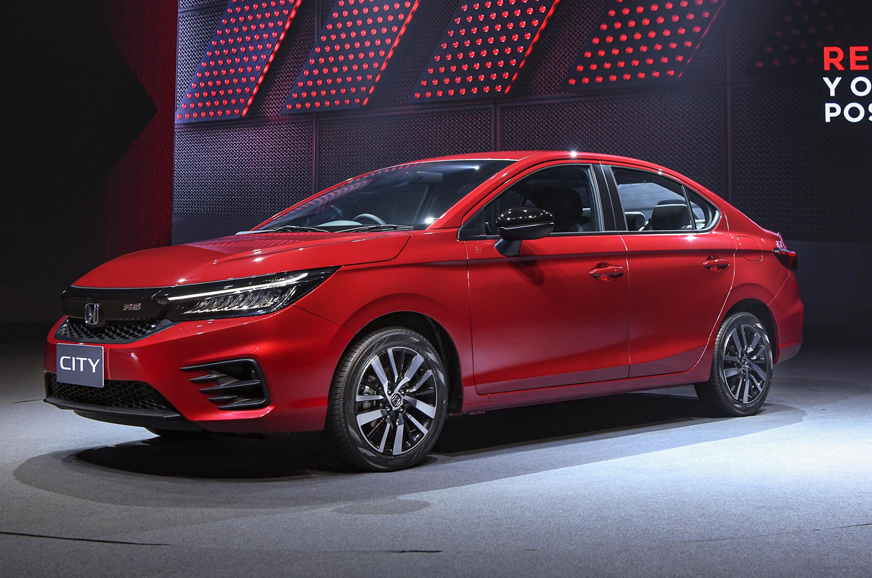
The fifth-gen Honda City was unveiled for the first time recently at an event in Thailand. Along with the standard car, Honda also took the wraps off it's sportier RS Turbo variant. The City RS Turbo will first go on sale in the Thailand market in the the months ahead and will subsequently hit more international markets.
The City RS Turbo is essentially a sporty version of the standard model. It gets sportier front and rear bumpers with black inserts, a subtle black trunk-lid-mounted rear spoiler, darkened glass for its tail lamps and full-LED headlamps with black inserts. The new variant also gets larger 16-inch alloy wheels instead of the 15-inch ones seen on the standard City for the Thailand market.
On the inside, it gets sportier trimming on the dashboard and centre console, different seat fabric and red accents on the instrument cluster. Under the hood, the RS Turbo gets the same 122hp, 1.0-litre turbo-petrol engine, mated to a CVT gearbox, as the City for Thailand.
The current fifth-gen Honda City is aimed at the Thailand domestic market and due to its stringent emission and taxation rules, the model misses out on a few features that were available on the fourth-generation car. However, the new India-spec Honda City is expected to get a long list of features that may better the outgoing model’s and will also come with BS6-compliant petrol and diesel engine options.
For the Indian market, Honda will bring a new 1.5-litre petrol engine coupled with mild-hybrid tech that is similar to the one that will be sported by the all-new Jazz hatchback sold internationally (as the Honda Fit). Additionally, India will also get the 1.5-litre diesel engine – the same unit that is available on the current-gen City, but updated to comply with the new BS6 emission norms.
The fifth-gen Honda City will come to India in the second half of 2020. In the Indian market, the new City will rival the likes of the heavily updated Hyundai Verna, the Maruti Suzuki Ciaz, the Toyota Yaris, the Volkswagen Vento and the Skoda Rapid. Expect more details on the India-spec Honda City to surface closer to the model’s market introduction.
Also see:

SUVs have become a focus area at Ford globally, and of the multiple models in development is a mid-size SUV that will head to India as well. Known by its internal codename B745, the SUV will be built on an all-new platform and will be about 4.3m long. The new Ford SUV's size will put it right in the heart of the hotly contested Indian mid-size SUV segment.
Along with the next-gen Mahindra XUV500-based C-SUV (code: C757), the new mid-sized model will be one of three new Ford-branded SUVs for India. What’s more, the B745 platform will also serve as the base for the long-touted Mahindra XUV400 (code: S204) which Mahindra has greenlighted for production. Remember, Mahindra and Ford have entered into a JV in India and will jointly develop products for our market. Mahindra’s XUV line of SUVs – the XUV500 and XUV300 – comprise monocoque-bodied and front-wheel-drive (or front-biased AWD) models, and the new XUV400 will be no different in its basic architecture.
While the SUVs will be built on a Ford platform and use Mahindra engines, the two models will be different in look – an approach both the carmakers will follow for all jointly developed products. There will be common elements on the inside as well but things like the infotainment systems will be shared. Also, like other models to come from the venture, the duo will be sold from their respective carmaker’s dealerships.
Ford and Mahindra’s SUVs will not be the only new entrants to the mid-size segment in the years to come. Maruti and Toyota are jointly developing their own models; Skoda and Volkswagen will have a model each by 2021; and early next year, the second-gen Hyundai Creta will also go on sale. If you aspire to own a mid-size SUV, be prepared to be spoilt for choice.
Also see:
Next-gen Mahindra XUV500 interiors seen for the first time
Venue vs XUV300 vs Nexon vs EcoSport
Up to Rs 1.20 lakh off on Mahindra's Alturas G4, XUV500, TUV300, Scorpio


Also see:
Benelli Leoncino 250 review, test ride
Benelli Leoncino 250 image gallery
Benelli Leoncino 250 launched at Rs 2.5 lakh
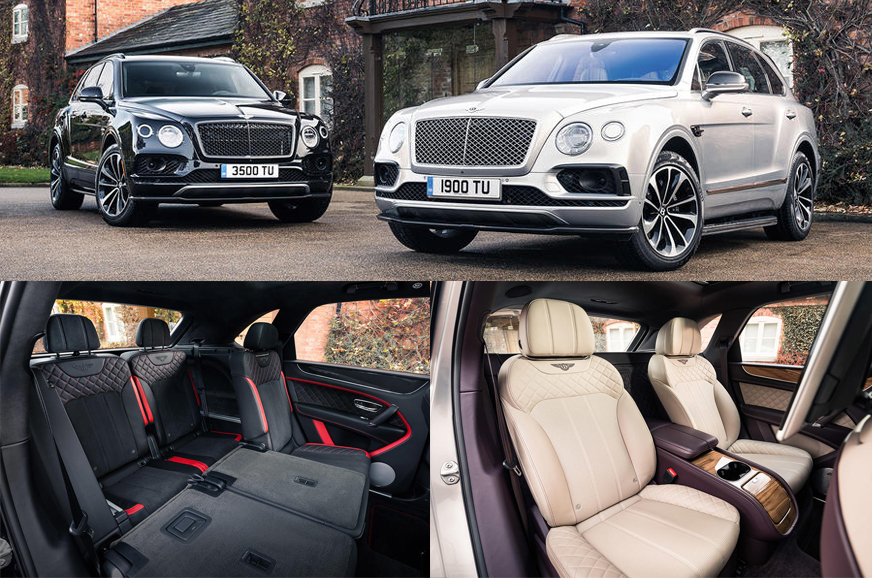
In a bid to appeal to a wider clientele, Bentley has introduced two new seating layouts for the Bentayga. The British carmaker is now offering its flagship SUV with either a four-seat or a seven-seat layout, replacing the sole five-seat configuration sold previously.
The Crewe-based car maker says the addition of a seven-seat option reinforces the SUV's status as “the world’s most versatile luxury vehicle.”
The V8 and Speed variants can be optioned with either seating configurations, while the Bentayga Hybrid is available only with four seats, due to packaging limitations of its petrol-electric powertrain.
In four-seat form, the Bentayga adopts a Captain style of seating intended to “provide an enhanced space for relaxation, entertainment or work, on the move.” The two rear seats feature 12-way electrical adjustment, heating, ventilation and massage functions. Options such as Bluetooth headphones, fold-down picnic tables and individual Mulliner Console drinks cooler are also on offer.
In seven-seat models, the third row can be folded away automatically.
Bentley said, “The flexible seating options make the all-terrain Bentayga the most practical luxury car Bentley has ever built. Big enough to carry a family of seven, it also has the ability to swallow up a boot-load of luggage when required, while the available four-seat configuration means the Bentayga can also double as a luxury limousine.”
Bentley will be hoping that the Bentayga’s seating tweaks will help give the SUV an edge over new rivals on the market – such as the recently revealed Aston Martin DBX and Mercedes-Maybach GLS.
The carmaker has also begun testing a facelift of its SUV ahead of its debut sometime next year. The test mules in the images wore wear heavy camouflage to the front and rear, suggesting that Bentley is planning a number of design updates.
While the SUV will remain instantly recognisable it is set to get styling updates in line with the new Continental and Flying Spur with the test mule sporting revised headlamps and tweaks to the rear lights as well. We can also expect the front and rear bumpers to be redesigned.
Just as significant will be the technology overhaul inside. The current car's infotainment system is expected to be replaced by the latest system from the Continental GT and Flying Spur. A fully digital instrument display will likely also feature, while the range of active safety technology should advance as well.
The brand's flagship W12 engine is expected to receive upgrades to boost efficiency, but don't expect anything dramatic across the rest of the range. The V8 is relatively new, too, while the six-cylinder plug-in hybrid model still isn't on sale after a lengthy delay.
Question marks remain over the diesel model, which was officially axed from the firm's line-up in 2018 in international markets. A change in attitude towards the fuel was blamed for its removal back then, but since then sister brand Audi has introduced several large capacity S-badged diesel models to its range.
Bentley currently markets the Bentayga in India with a choice of V8 and W12 petrol engines alongside a V8 diesel engine. It is not yet known when the new seating layouts will be offered on the Bentaygas headed to India though it should become available for order in the coming months.
Also see:
Bentley Bentayga Speed claims world’s fastest SUV title
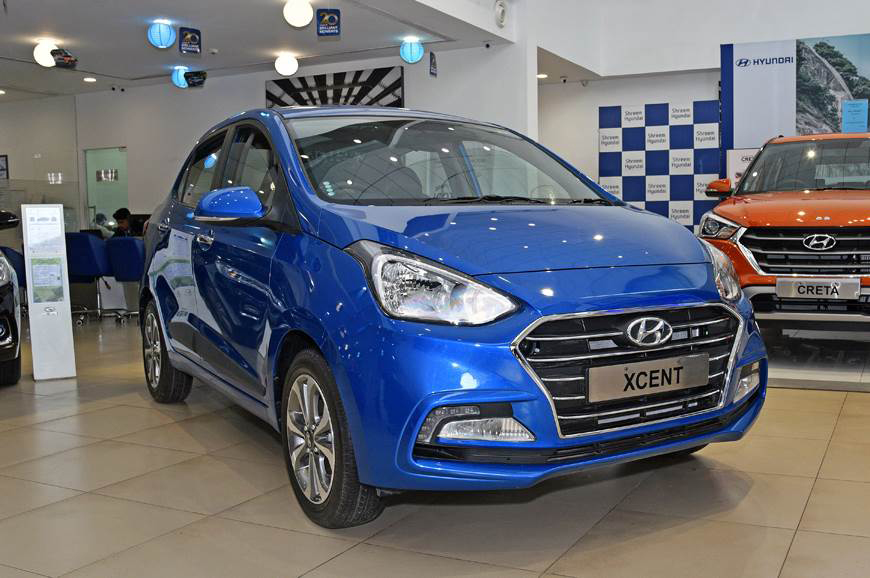
Hyundai Motor India has just chalked up a new sales milestone through its first sub-four-metre sedan – the Xcent. Launched on March 12, 2014, after the India reveal at Auto Expo 2014, the Xcent has crossed the 2,50,000-unit sales milestone in the domestic market.
As per statistical data of our sister publication, Autocar Professional, as of end-October 2019, the Xcent has chalked up sales of 2,51,953 units – 1,51,368 petrol and 1,00,585 diesel variants and a 60:40 petrol-diesel model split. The car’s best annual performance came in FY2015, when it totted up sales of 62,605 units but after that, sales have seen a year-on-year decline.
One may recollect that engineers at Hyundai’s R&D centre in Hyderabad and at Namyang, Korea, worked in collaboration to develop the Xcent right from its concept stage, through to the final product-development stage. The Xcent was squarely aimed at the Maruti Suzuki Dzire and the Honda Amaze, with pricing starting at Rs 4,66,000 (ex-showroom, Delhi) – about Rs 20,000 less than the Dzire and about Rs 30,000 less than the Amaze, at the time. April 2017 saw the Xcent get its first facelift, which in turn saw it get an all-new front end with the new signature Hyundai grille that is both wider and taller than the pre-facelift version.
The Hyundai Xcent – which was also designed to be an export model from India – has seen 1,29,913 units being shipped to overseas markets over five years.
Meanwhile, Hyundai has confirmed that it won’t retain the Xcent name for its all-new compact sedan. This new-gen compact sedan has been named the Hyundai Aura, and is set to be launched in the months ahead. While the Aura is the successor to the Xcent in Hyundai’s product portfolio, the Xcent compact sedan will not be discontinued.
Hyundai will be taking the wraps off the new Aura compact sedan at a world premiere on December 19, 2019. Being a global model, the car will replace the Xcent compact sedan in some markets as well. The Aura is based on the Grand i10 Nios premium hatchback that made its India debut on August 20 this year, and is already on sale in many countries.
Cognisant of the fact that the Xcent is extremely popular with fleet operators in India, Hyundai is expected to offer it in lower-spec trims for commercial-use buyers only. This will ensure that the new Aura compact sedan does not get the tag of a cab.
What this also means is that the Xcent will come with BS6-compliant versions of the current model’s engines. A positive here for the Korean carmaker is that from April 2020, the Maruti Dzire diesel will no longer be available, leaving the diesel compact sedan fleet market wide open for the Xcent.
The current-gen Xcent will continue to be sold as the Xcent Prime in petrol, diesel and CNG guise, aimed mainly at cab and fleet operators and will rival the Maruti Suzuki Tour S that is based on previous-gen Dzire sedan.
Also see:
Hyundai Grand i10 now sold as petrol-only
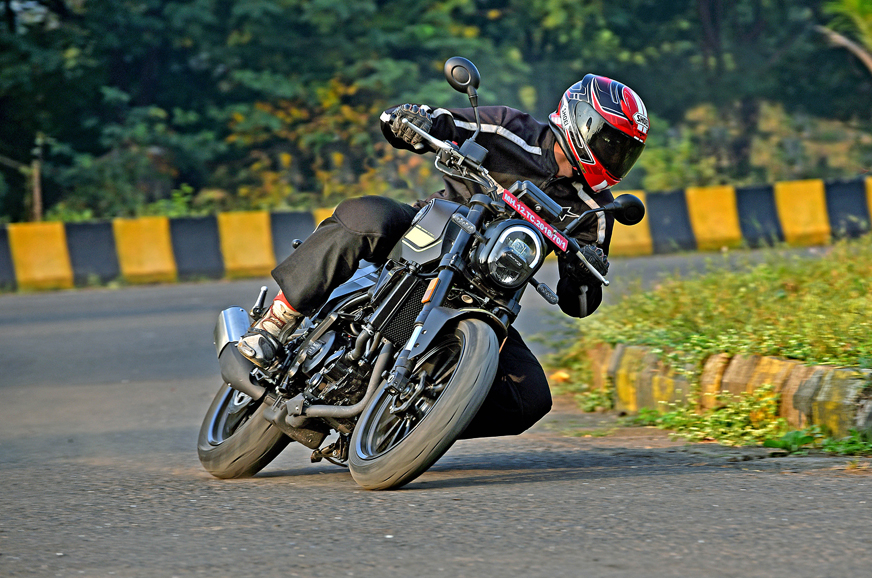
Benelli lists its Leoncino line-up under the Scrambler tab on its website, and we were a bit apprehensive of this when we rode the Leoncino 500 a couple of months ago. Now this might be true for the Trail variant of the 500 that’s sold overseas, but we’ve just experienced the smallest of the Leoncino family and the only ‘scrambling’ this bike has been designed for is through the concrete jungle.
How does it look?
The Leoncino 250, as the name suggests, is a smaller iteration of the Leoncino 500. It shares an almost identical design philosophy and it looks like a slightly shrunken version of its elder sibling. A number of aspects like the scooped seat, mudguard-mounted rear number-plate holder, black panels on the tank, and even the little lion emblem on the front fender, are seen on both bikes. However, the 250 uses a pill-shaped LED headlamp whereas the 500 gets a round unit. While these characteristics add to the visual presence of the bike, some of them take a toll on the ergonomics. The seat is a bit too narrow and could have done with a more comfortable padding, as well as more space for a pillion. Most of all, the foot pegs are aggressively rear-set and result in a cramped riding position.
What’s the engine like?
Having said that, I wouldn’t categorise the Leoncino 250 as uncomfortable – the ergonomics are just not what you’d expect from a motorcycle in the category. Under the skin, the 249cc single-cylinder powering the bike is a fairly punchy unit and while it’s certainly not a performance benchmark, there’s enough on offer to keep you happy; that, and a bassy exhaust note!
It’s not a very refined engine and you will feel (and hear!) vibrations higher in the rev band, but not at levels that will bother you. In our performance tests, the Leoncino 250 managed the 0-60kph sprint in 3.49sec, while a 100kph took 9.68sec. These figures aren’t exemplary and are almost identical with those of the Suzuki Gixxer 250. However, the Honda CB300R, which falls in the same bracket as the Leoncino, is vastly quicker.
What’s it like to ride?
Barring its ergonomics, the Leoncino 250's ride quality is firm, but not punishingly so. Its suspension comprises a 41mm USD fork and a preload-adjustable monoshock, a set-up that’s quite common for bikes in this price bracket. The riding position and the suspension setup both feel more in line with a sporty naked, which means that standing up and riding through broken stretches (as you would on a scrambler) isn’t a very natural-feeling process.
What other features does it have?
Most of what the Leoncino offers to stand out from its competition comes in the form of small details that aim to give it a premium touch. While aspects like the basic digital instrument console are a letdown, the bike does give you some things to be happy about – the tyres, for instance, are premium Metzeler M5s and the design language is unique enough to turn heads.
Should I buy one?
As a motorcycle, the Leoncino 250 has its charms, but the price is a deal breaker. An ex-showroom price tag of Rs 2.5 lakh puts it a whole Rs 1 lakh above the Suzuki Gixxer 250, which has very similar levels of performance and puts it in the space of much more accomplished machines. For a similar budget, you could get yourself the KTM 390 Duke, the Honda CB300R, or even the Royal Enfield Interceptor 650 – all motorcycles going up against whom the little Leoncino would be seriously out of its depth. If (or rather, when) Benelli figures out a way to bring the price down to an appropriate level, the Leoncino 250 will make for a quirky, left-of-field alternative to the established crowd.

Tata dealer outlets across India will begin accepting bookings for the upcoming Altroz hatchback from December 4, 2019. The booking amount for the Altroz will be set at Rs 21,000. The Altroz in its India-spec will most likely be unveiled on the same day, with dispatches for customer display vehicles and test drive cars also set to begin around the same time. The official price announcement for the Altroz will take place in January next year.
The company had begun its marketing activities a few days ago and has already commenced mass production of the Altroz hatchback at its Pune plant. While the Altroz was initially expected to launch around July 2019 with BS4 engines on offer, the company later decided to introduce the model with BS6 engines right from the word go, which is why Tata pushed the market launch of the Altroz to January 2020.
The Altroz made its world premier earlier this year at the Geneva motor show and is one of the newer Tata models that features the brand’s Impact 2.0 Design language. The premium hatchback was first previewed in concept from back in 2018 at the Auto Expo in New Delhi. The Altroz is also the first Tata product to use the new ALFA (Agile, Light, Flexible and Advanced) platform. This architecture is one of two platforms that will form basis of most future Tata cars and SUVs.
On the inside, the Altroz gets a stylish interior, replete with a 7.0-inch free-standing touchscreen infotainment system. It will get soft touch materials and multiple textures that should add to its premium feel. The model will also feature ambient lighting and other app-based features to name a few other creature comforts expected.
Three BS6-compliant engine options will be on offer with the Altroz – an 85hp, 1.2-litre petrol; a 102hp 1.2-litre turbo-petrol; and a 90hp, 1.5-litre diesel. As far as gearbox options go, a 5-speed manual will be standard at launch, with automatic transmission variants joining a little later.
On December 4, the company will also announce the variant breakup, colour options and deliver schedule for the Altroz. Expect Altroz prices to start at around the Rs 5 lakh mark and go up to Rs 8 lakh (ex-showroom). Key rivals to the new Tata Altroz hatchback include the recently launched Toyota Glanza, Maruti Baleno, Honda Jazz and the popular Hyundai i20 – an all-new next-gen version of the Hyundai premium hatchback is also expected to launch sometime next year.
Also see:
Tata Altroz teased ahead January 2020 launch
Tata Gravitas: 5 things to know
New cars for 2020: Hatchbacks to wait for
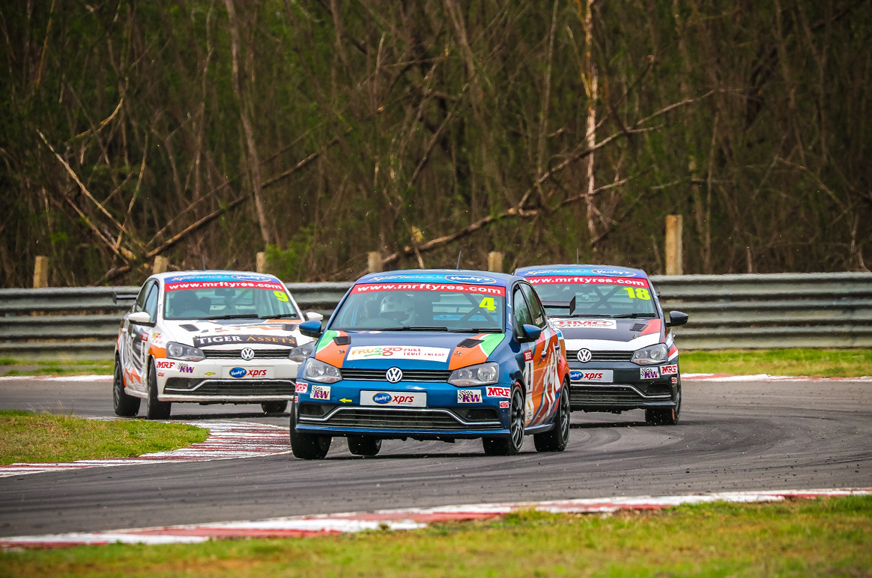
Volkswagen Motorsport recently announced that it would be distancing itself from any factory-backed motorsport commitments using internal combustion engines (ICEs). Instead, it plans to focus its motorsport strategy on electric mobility. The move cast some doubt on the future of the company’s motorsport programme in India, where all of its racers currently rely on ICEs.
However, in what comes as welcome news to the motorsport community in India, Volkswagen Motorsport India has now confirmed that its racing programme in the country will continue unaffected for next year. Just this year, the company expanded its presence in Indian motorsport by entering the Indian Touring Championship (ITC) category of the 2019 MRF MMSC FMSCI Indian National Car Racing Championship. It fielded three race-spec Vento cars in the series and capped off an impressive debut season with driver Dhruv Shivaji Mohite winning the title.
Volkswagen’s one-make Ameo Cup championship was conferred with National Championship status by the Federation of Motorsport Clubs of India (FMSCI) earlier this year as well. As a result, the series ran as the ‘Ameo Class’ as part of the 2019 MRF MMSC FMSCI Indian National Car Racing Championship. The series’ new National Champion status means the results now carry more weight than ever before, with winners of the Pro and Junior categories officially recognised as National Champions. In addition to fielding an R2-spec Polo for its factory team in the Indian National Rally Championship (INRC), Volkswagen also runs a customer sport initiative wherein it provides its rally-spec Polo built to the INRC’s various class regulations.
It’s a move that makes sense in a country like India, where electric mobility is still in its nascency. However, on the international front, the company has reiterated its focus on electric racing, with the ID R becoming the company’s new motorsport poster child. The electric race car has already set new records at Pikes Peak, the Nürburgring and the Goodwood Festival of Speed. Additionally, the company has also confirmed that it will be developing new motorsport concepts for the ID family, based on the Modular Electric Drive Kit (MEB), on which a number of future electric production vehicles will be based.
This move also means that Volkswagen has decided to pull the plug on its Golf GTI TCR at the end of this year, and a successor based on the new generation will not be offered. The Polo GTI R5 rally car will continue to be produced for privateer customer teams, but any factory-backed efforts running the car will be axed.
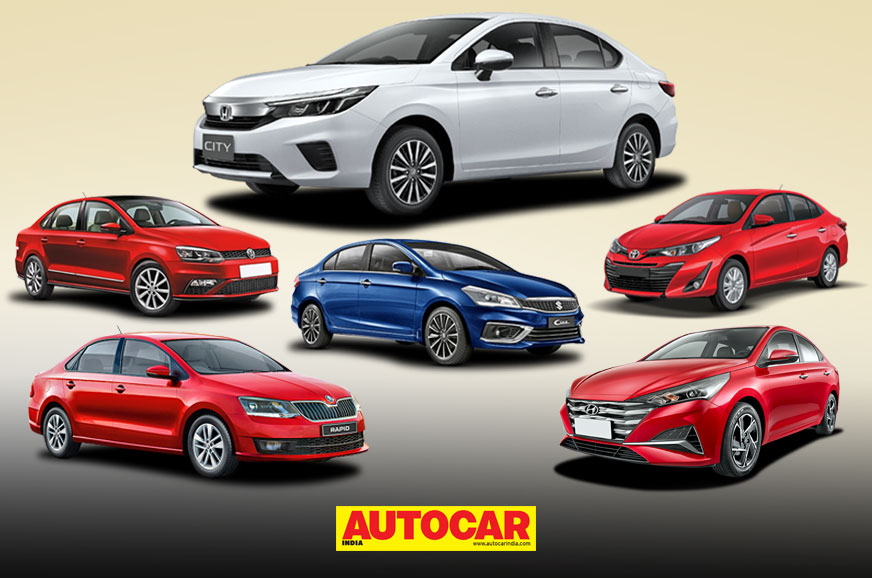
Midsize sedans might not be as hot as they once were but there’s never really been a shortage of options. And to amp things up, Honda will bring the all-new, fifth-gen City to India in mid-2020. By that time, Hyundai will also have brought out its updated Verna, which is another popular midsize sedan.
The fifth-gen City will have its work cut out for it when it does launch in India, which is why we’ve lined it up against its future rivals – on paper – to see if it’s got what it takes.
The new Honda City is not only longer and wider than the outgoing model but it's now also the longest and widest car in the segment. Interestingly, the new City’s wheelbase is 11mm shorter than the earlier model. Going purely by the numbers, it’s the City with the promise of most shoulder room, while the Ciaz should maintain its lead in the all-important area of rear-seat legroom.
| Dimensions | ||||||
| 2020 Honda City* | 2020 Hyundai Verna* | Maruti Ciaz | Volkswagen Vento | Toyota Yaris | Skoda Rapid | |
| Length | 4553mm | 4405mm | 4490mm | 4390mm | 4425mm | 4413mm |
| Width | 1748mm | 1720mm | 1730mm | 1699mm | 1730mm | 1699mm |
| Height | 1467mm | 1455mm | 1485mm | 1467mm | 1495mm | 1466mm |
| Wheelbase | 2589mm | 2600mm | 2650mm | 2553mm | 2550mm | 2552mm |
| Fuel tank | 40 litres | 43 litres | 43 litres | 55 litres | 42 litres | 55 litres |
| Tyre size | 185/55 R16 | 195/55 R16 | 195/55 R16 | 195/55 R16 | 185/60 R15 | 195/55 R16 |
*Measurements are of the international-spec model and may differ from the India-spec car.
The updated Verna is also marginally longer than the model currently on sale in India. There’s no change to the 2,600mm wheelbase, however, that’s second only to the Ciaz’s. The Toyota Yaris is among the smaller cars here, while the Skoda Rapid and Volkswagen Vento are par for the course but are the narrowest. The Toyota is also the only model to get smaller 15-inch wheels.
The current City’s BS4-compliant 1.5-litre petrol engine will be upgraded to meet BS6 emission norms, but there aren’t expected to be any other changes besides that. While the Honda engine will outpower its competition, its torque figure isn’t the highest. We’d reported previously that Honda will bring a mild-hybrid petrol City to our market, but that is set to arrive only by 2021. Even the new Hyundai Verna – expected to be powered by the same 1.5-litre petrol engine (shared with the Kia Seltos) – will get a mild-hybrid option. For now, the Maruti Ciaz is the only model that offers this tech. The VW Group will not be upgrading the current Vento and Rapid’s 1.6-litre engine (or even the Vento’s 1.2-litre turbo-petrol engine) to BS6-spec. The German carmaker will instead be bringing a heavily localised version of the 1.0-litre turbo-petrol engine, which is likely to be in its higher 115hp/200Nm state of tune.
Do note that the Thai-spec Honda City comes with a 1.0-litre turbo-petrol engine that is tuned to produce 122hp and 173Nm of torque, and is paired with a CVT automatic only. India won’t get this engine.
| Petrol Engines | ||||||
| 2020 Honda City* | 2020 Hyundai Verna* | Maruti Ciaz | Volkswagen Vento | Toyota Yaris | Skoda Rapid | |
| Type | 4 cyls, naturally aspirated | 4 cyls, naturally aspirated | 4 cyls, naturally aspirated | 4 cyls, naturally aspirated/4 cyls, turbocharged | 4 cyls, naturally aspirated | 4 cyls, naturally aspirated |
| Displacement | 1.5-litre | 1.5-litre | 1.5-litre | 1.6-litre/1.2-litre | 1.5-litre | 1.6-litre |
| Power | 119hp | 115hp | 105hp | 105hp/105hp | 107hp | 105hp |
| Torque | 145Nm | 144Nm | 138Nm | 153Nm/175Nm | 140Nm | 153Nm |
| Manual gearbox | 5-speed | 6-speed | 5-speed | 5-speed | 6-speed manual | 5-speed |
| Automatic gearbox | CVT | CVT | 4-speed torque convertor | 7-speed dual-clutch | CVT | 6-speed torque convertor |
| Mild-hybrid | Option | Option | Yes | No | No | No |
*Expected
Coming to the diesel engine options, the Yaris is the only midsize sedan that at the moment does not have this option. However, come April 2020, the Volkswagen Vento and Skoda Rapid will also be petrol-only models. Maruti Suzuki is testing a BS6-compliant version of its 1.5-litre DDiS225 diesel engine, but there’s no confirmation on when (or if) it’ll arrive under the bonnet of the Ciaz.
It is likely that the Honda City diesel (the current 1.5-litre unit will be upgraded to comply with BS6 norms) will only have the diesel Hyundai Verna facelift to contend with. The Hyundai is expected with the Seltos’ 1.5-litre diesel engine, which comfortably outpowers the Honda unit, despite producing 13hp and 10Nm less than the current Verna’s 1.6-litre diesel unit.
| Diesel Engines | |||
| 2020 Honda City* | 2020 Hyundai Verna* | Maruti Ciaz | |
| Type | 4 cyls, turbocharged | 4 cyls, turbocharged | 4 cyls, turbocharged |
| Displacement | 1.5-litre | 1.5-litre | 1.5-litre |
| Power | 100hp | 115hp | 95hp |
| Torque | 200Nm | 250Nm | 225Nm |
| Manual gearbox | 6-speed | 6-speed | 5-speed |
| Automatic gearbox | CVT | 6-speed torque convertor | NA |
| Mild-hybrid | No | No | No |
*Expected
| Safety Features | ||||||
| 2020 Honda City | 2020 Hyundai Verna | Maruti Ciaz | Volkswagen Vento | Toyota Yaris | Skoda Rapid | |
| Airbags | 6 | 4 | 2 | 4 | 7 | 2 |
| ABS with EBD | Yes | Yes | Yes | Yes | Yes | Yes |
| Hill-start assist | Yes | Yes | AT only | AT only | Yes | Yes |
| Electronic stability control | Yes | Yes | AT only | AT only | Yes | No |
| Rear camera | Yes | Yes | Yes | Yes | Yes | Yes |
*Features are of the international-spec model and may differ from the India-spec car.
On the safety front, the Toyota Yaris will still be the midsize sedan with the most safety features. While the new Verna for the Chinese market comes with a front collision warning brake system, a driver fatigue monitor and a lane-keeping assist system, the India-spec Verna facelift is unlikely to get any of these. The new Honda City adds hill-start assist and ESC to the older model’s fairly long list of safety features, at least for the Thai market. Whether this tech will come with the India-spec 5th-gen City is yet unknown.
| Features | ||||||
| 2020 Honda City | 2020 Hyundai Verna | Maruti Ciaz | Volkswagen Vento | Toyota Yaris | Skoda Rapid | |
| Touchscreen | 8.0-inch | 8.0-inch | 7.0-inch | 6.5-inch | 7.0-inch | 6.5-inch |
| Android Auto/Apple CarPlay | No/Yes | Yes/Yes | Yes/Yes | Yes/Yes | Option | Yes/Yes |
| Bluetooth | Yes | Yes | Yes | Yes | Yes | Yes |
| Connected car tech | Option | Yes | Option | Option | No | No |
| Steering-mounted controls | Yes | Yes | Yes | Yes | Yes | Yes |
| Cruise control | Yes | Yes | Yes | Yes | Yes | Yes |
| Push button start | Yes | Yes | Yes | No | Yes | No |
| Paddleshifters | Yes | No | No | No | Yes | No |
| Automatic climate control | 1-zone | 1-zone | 1-zone | 1-zone | 1-zone | 1-zone |
| Wireless charging | No | Yes | No | No | No | No |
| Leather upholstery | Yes | Yes | Yes | Yes | Yes | Yes |
| Leather upholstery | Analogue | 12.3-inch digital | Analogue | Analogue | Analogue | Analogue |
*Features are of the international-spec model and may differ from the India-spec car.
Coming to the equipment on offer, all cars will have most of the basics covered, and this includes auto climate, touchscreen infotainment, steering-mounted audio controls, cruise control and smartphone connectivity. However, if the China-spec Verna is anything to go by, it’ll be the Hyundai that'll lead the features count. A full-digital instrument cluster, connected car tech and wireless charging are some of the features that could make it to the India market. The new City in its international spec seems to be par for the course with the remainder of the segment.
As it stands, based on the information available, the Verna facelift makes a good case for itself, both in terms of engines and equipment. And given that Hyundai offers a sizeable equipment list on its cars, we can expect generous kit on the India-spec car as well. The new Honda City, on the other hand, is likely to continue to attract the more self-drive-focused buyer with a strong petrol engine and equipment that is expected to be par for the course in the segment. The Yaris does stand out in terms of the safety kit on offer, while the Ciaz’s strength is in the amount of equipment it offers at a lower price point than current rivals.
Hyundai is expected to launch the heavily updated Verna in India in the first half of 2020 with the all-new City expected to arrive shortly after. The Rapid and Vento are also due for a replacement with both models having soldiered on for the better part of a decade. VW Group India is working on a replacement for both, though the new models are likely to arrive only in the latter part of 2021.
Also see:

Delhi has become a gas chamber. This is not a recent development. Thing is, the amount of pollution has been increasing steadily over the years. At first, it was only pilots who were affected; you could imagine them peering through the pea soup, looking for landing lights and the runway. This happened every winter in the capital. They called it fog back in the day, and some of it was. Then the constitution of the fog changed. It got darker, dirtier, muckier, more diabolical. Suddenly, everyone realised this smoky fog was smog.
The greens were the first to stand up and point fingers – at cars of course. Diesel cars were the main culprits, they howled. And this appeared to be true. It’s common knowledge after all that cars make pollution, right? And diesels made the most visible pollution, so they must be to blame. Then, the captains of the car industry were hauled over the coals, held responsible for the poor air quality and deteriorating pulmonary function, and new diesel cars were penalised disproportionately, made scapegoats. Some were even banned. And then every time the pollution increased as the weather cooled, out came the knives, again. They even banned classic and vintage cars from being driven!
This time around, however, things are different. Yes, pollution is massively up, the very odd odd-even scheme is back (to reduce congestion and aid the app-based cabs), and every once in a while, someone on a debate somewhere mentions vehicular pollution. But today, everyone and his Labrador know it isn’t primarily cars. Yes, yes, yes, new cars still emit a small percentage of the total pollution, and that goes for BS6 cars as well. But that’s NOT where the vast bulk of the pollution is coming from.
Want to solve the problem, want to clean Delhi’s air? Focus on the big sources of emission. The stubble burning, of course, but also the coal and thermal power stations, heavy and small scale industry and don’t forget garbage disposal. Remember, the latter can’t be burnt during the monsoon. You have to wait for the rains to stop, let the garbage dry and only then light it up.
In fact, looking back, probably the biggest reason for Delhi’s deadly air pollution is that those in charge have been barking up the wrong tree. Imagine how much cleaner Delhi’s air would have been had we diligently attacked the big problems from day one?
Then there’s the other big question: How could we have got it so wrong, despite having all the scientific data? Did we get it wrong? Also, who is to blame? And, importantly, who’s gassing who?
Yes, a large bulk of vehicular pollution needs to be cut. But, remember, approximately 90 percent comes from 10 or 15 percent of the worst polluters – old cars, bikes, and light and heavy trucks.
Yes, getting rid of the smog in Delhi is possible if we put in a collective effort; we can do it. Thing is,
we have to want to.

Ford’s first electric SUV – the Mustang-inspired Mach-E – is set to be launched in India by 2021. Revealed recently in full, the Mustang Mach-E will come to our shores via the CBU route, so it will surely be one expensive EV. It will, however, benefit from the lower GST rate for EVs.
At this time, it’s unclear which of the two battery options will be available with the Mach-E when it comes to our market. In international markets, the entry-level model features a single motor driving the rear wheels – either a 75kWh battery and 258hp motor, or a 99kWh battery and 289hp motor; both producing 416Nm of torque. Ford claims a 0-100kph time of under 8sec and a WLTP range of around either 450km or 595km, respectively, for this model.
The twin-motor, all-wheel-drive version of the Mach-E is offered in 75kWh battery and 258hp or 99kWh and 337hp forms; both versions produce 582Nm and have a claimed sub-7sec, 0-100kph time, with estimated ranges of 419km and 540km, respectively. All models have their top speed limited to 179kph.
By the time the Ford Mustang Mach-E arrives in India, there will be at least two all-electric premium SUVs on sale already – the Audi e-tron (set to launch early next year) and the Jaguar I-Pace (scheduled to launch late in 2020).
Also see:
Ford Mustang facelift India launch by second half of 2020
Ford Mustang Mach-E image gallery

Mitsubishi has revealed the updated Mirage hatchback and Attrage sedan ahead of their public debut at the 2019 Thailand motor show in Bangkok. The update sees the models receive a refreshed look and new interior tech.
Both cars have been given an exterior-styling revamp to reflect Mitsubishi’s current Dynamic Shield design concept, featuring a redesigned grille flanked by new LED headlights and a new front bumper. At the back, there are restyled tail-lamps with LED elements along with a new bumper. Completing the looks are newly design alloy wheels and new paint-shade options.
Changes to the cabin include new upholstery – part-leather on the Mirage and full-leather on the Attrage – revised trimmings, and the installation of a new Smartphone Display Audio infotainment system comprising a 7.0-inch touchscreen with Android Auto and Apple CarPlay compatibility.
While mechanical details have not yet been revealed, both models are expected to continue using the 1.2-litre petrol motor offered on the pre-facelift models.
The current Mirage has been sold in over 90 countries, including Thailand, Europe and the US; while the Attrage is sold in over 60 countries, including Thailand and North America. The Mirage and the Attrage are both manufactured in the Laem Chabang Plant of Mitsubishi Motors Thailand and have achieved cumulative global sales of around 6,50,000 and 2,80,000 units, respectively (as of end-September 2019).
Also see:
2020 Mitsubishi Mirage facelift image gallery
2020 Mitsubishi Attrage facelift image gallery

The current government’s project to connect the National Capital and the Financial Capital via a high-speed corridor seems to be in the fast lane. The Union Minister of Road Transport and Highway, Nitin Gadkari, said at the inauguration of the three-day International Centre for Automotive Technology summit that the Delhi-Mumbai expressway is on a fast track.
Rs 1 lakh crore has been allocated for the project, the acquisition of land for the signal-free expressway is nearly complete and construction of the road itself will begin soon, said Gadkari. The Delhi-Mumbai high-speed road corridor will connect Haryana, Rajasthan, Gujarat and Maharashtra and be the longest axis control expressway. In addition to cutting down travel time between the two cities and help vehicles consume less fuel (due to the high quality of the roads), the expressway will also help in the agricultural and industrial growth of these states.
The minister also said that about 30km of road are being constructed every day across the nation. The KMP, KGP and other national highway projects have been completed while the Dwarka Expressway, ring road in Delhi and the southern peripheral road (SPR) are still under development.

The Government of India has officially updated a section of the Motor Vehicles Act, 1988 that specifies the registration designation carried by vehicles of every state and union territory in the country. The license plate of every road-legal vehicle registered in the newly formed union territory of Ladakh will begin with ‘LA’.
Officially in effect from November 25, 2019, this law will help to further demarcate cars, scooters and other vehicles from those registered in what was previously the state of Jammu and Kashmir. The recent Jammu and Kashmir Reorganisation Act, 2019, which came into effect on October 31, 2019, saw the state become two separate Union Territories: J&K and Ladakh.
It seems that cars registered in the Union Territory of Jammu and Kashmir will continue to carry their original 'JK' designation.

Anything that wears the Activa badge is serious business for Honda. The Activa 125’s sales numbers, however, are far lower than what the 110cc model sells every month so this was a good model for Honda to break the ice with. The frostiness in question is the chilling prospect of the hefty price hike that the shift to BS6 brings with it. Honda announced months ago that the entire range would move to fuel injection, which meant we were braced for a cool Rs 10-15% estimated price hike. Okay that’s the last of the temperature related puns, but here’s the deal - every small capacity machine that moves to BS6 is going to get a lot more expensive. Honda has taken it upon themselves to launch India’s first BS6 scooter in the form of the Activa 125 BS6 you see here. Kudos to them for taking that first step, but now let’s find out what you get for all that extra money you’re going to have to spend.
Let’s start with the big question - what does it feel like riding a BS6-compliant scooter? Honda put lots of work into it and the engine’s bore x stroke numbers have changed from 52.4 x 57.9mm to 50 x 63.1mm. The overall capacity is not very different, at 124cc, but the motor now has a much longer stroke, and of course, it is now fuel-injected. Beyond this, Honda has also worked towards reducing frictional losses as well as the weight of some parts within the engine. On the spec sheet though, the figure you will notice first is the drop in power, from 8.63hp to 8.29hp. Torque is down too, from 10.54Nm to 10.3Nm. The Activa was never one of the faster 125cc scooters and that hasn’t changed with this one, especially when you consider that it is now 3kg heavier.
What has taken a positive step forward is a perceptible improvement in the sense of refinement, both in terms of sound and feel from the engine. Honda’s new silent start system replaces the conventional starter motor with an ‘AC generator’ starter and what this means is that there is no more gear meshing sound to deal with. It’s strange at first, but you’ll quickly grow to like thumbing the starter button and having the engine smoothly and quietly fire up - more scooters should get this.
On the move, aside from the additional smoothness everything feels very familiar and the fuelling is very smooth without any jerkiness. Performance is decent at best, and just like before, the engine starts to feel a little strained upwards of 70kph, with an indicated 90 being the maximum you will see when sitting upright. Our vbox tests reveal a 0-60kph time of 11.2s which is about 3s slower than the quickest scooter in the segment, the TVS Ntorq 125.
The rest of the riding experience is very similar as well, because the chassis is pretty much unchanged. With relatively thin tyres at both ends and the combination of a 12-inch front and 10-inch real wheel, the Activa is very agile at city riding pace, but skittish when ridden fast in a straight line or through a corner. Ride quality and braking performance are both decent, but neither are outstanding. The riding position hasn’t changed either and while the seat is nice and comfy, the handlebar is still too low for tall riders.
The Activa 125 then continues to be the sensible choice in the segment for someone looking for a practical, no nonsense solution, but it doesn’t do much in terms of the fun factor. What has changed is that there are a number of new features that aim to increase the sense of a premium experience. Aside from the smooth engine starter it also gets a side-stand down engine cut off and the fuel filler cap has been moved to a more convenient external location. The top model we’ve ridden even gets an idle start-stop system which works quite seamlessly. If you come to halt for more than 3 seconds, the engine automatically cuts off and, when it’s time to set off, all you have to do is twist the throttle and it quickly fires right back up. The top two models get a new LED headlamp, which is pretty mediocre, but they also get a new instrument cluster with a digital display for the time, a trip meter, fuel efficiency and a distance to empty gauge.
The Activa 125 also gets a few visual tweaks with a redesigned headlamp area, a small new front glovebox (which feels rather flimsy) and some chrome splashes on the front and side Quality levels are decent, and while there are a few uneven panel gaps visible under close inspection, things are more or less what you would expect for the price. Speaking of, the base model with its drum brakes and steel wheels now costs Rs 67,490, which is a Rs 6300 price hike. However, if you want a disc brake, you have no choice but to go for the top model which now costs Rs 74,490, a full Rs 9,000 price hike from before.
These price hikes were to be expected, but I don’t think it is unreasonable to expect a disc brake as standard across the range. An Activa customer typically wants a fuss-free riding experience and may not care for the added features as much as they do about secure braking performance. For now, they don’t have much say in the matter.
To sum up, the Activa 125 has received a fairly substantial update for BS6 and it’s only a matter of time before the rest of the range follows suit. If you value the added smoothness and features, you will like what this update brings, but if that (and lower emissions!) is not what you’re interested in, there’s not much time left to snap up a much more affordable BS4 spec scooter.
MG Motor India has announced that its first product for our market, the Hector SUV, has crossed 50,000 bookings. The model was launched las...
